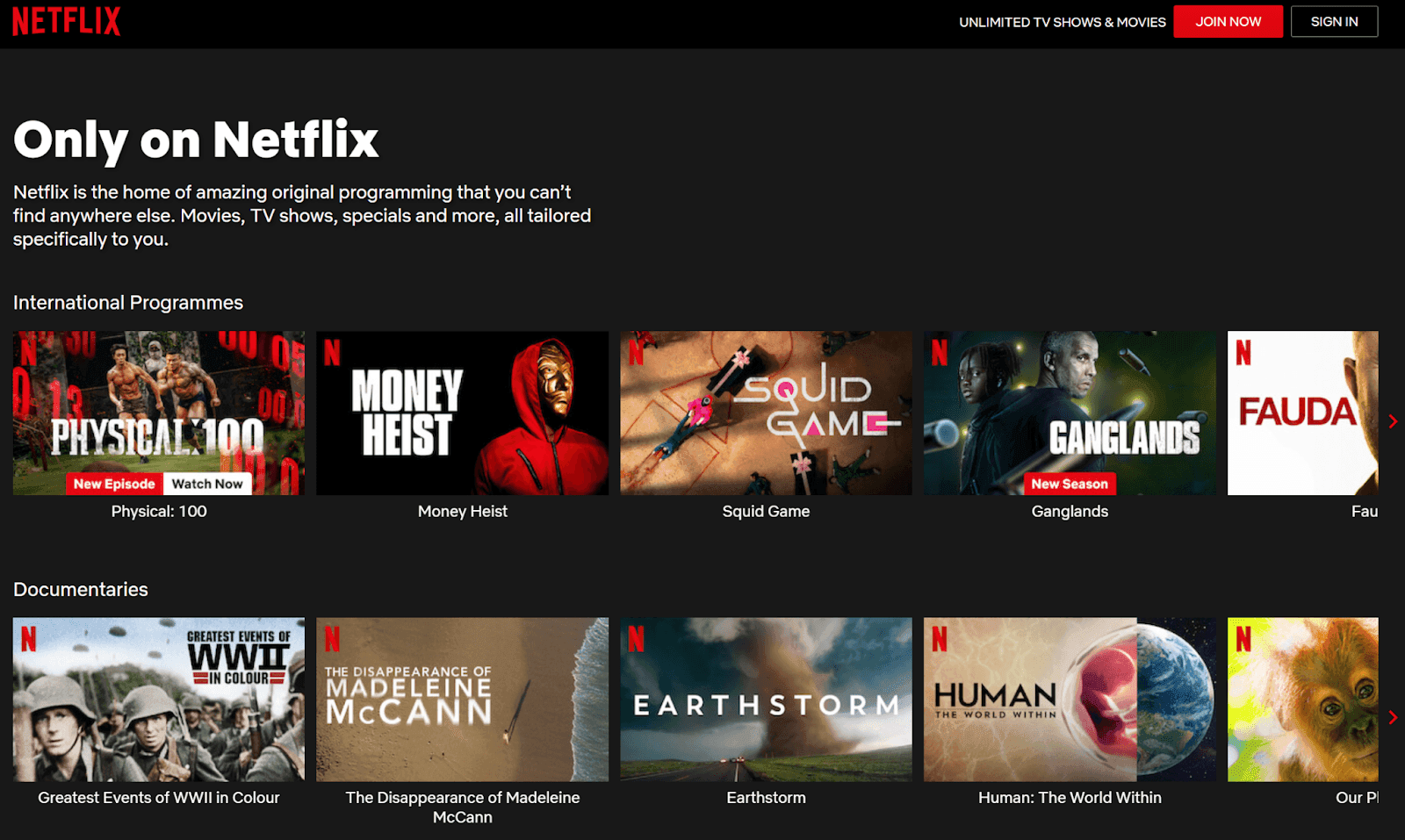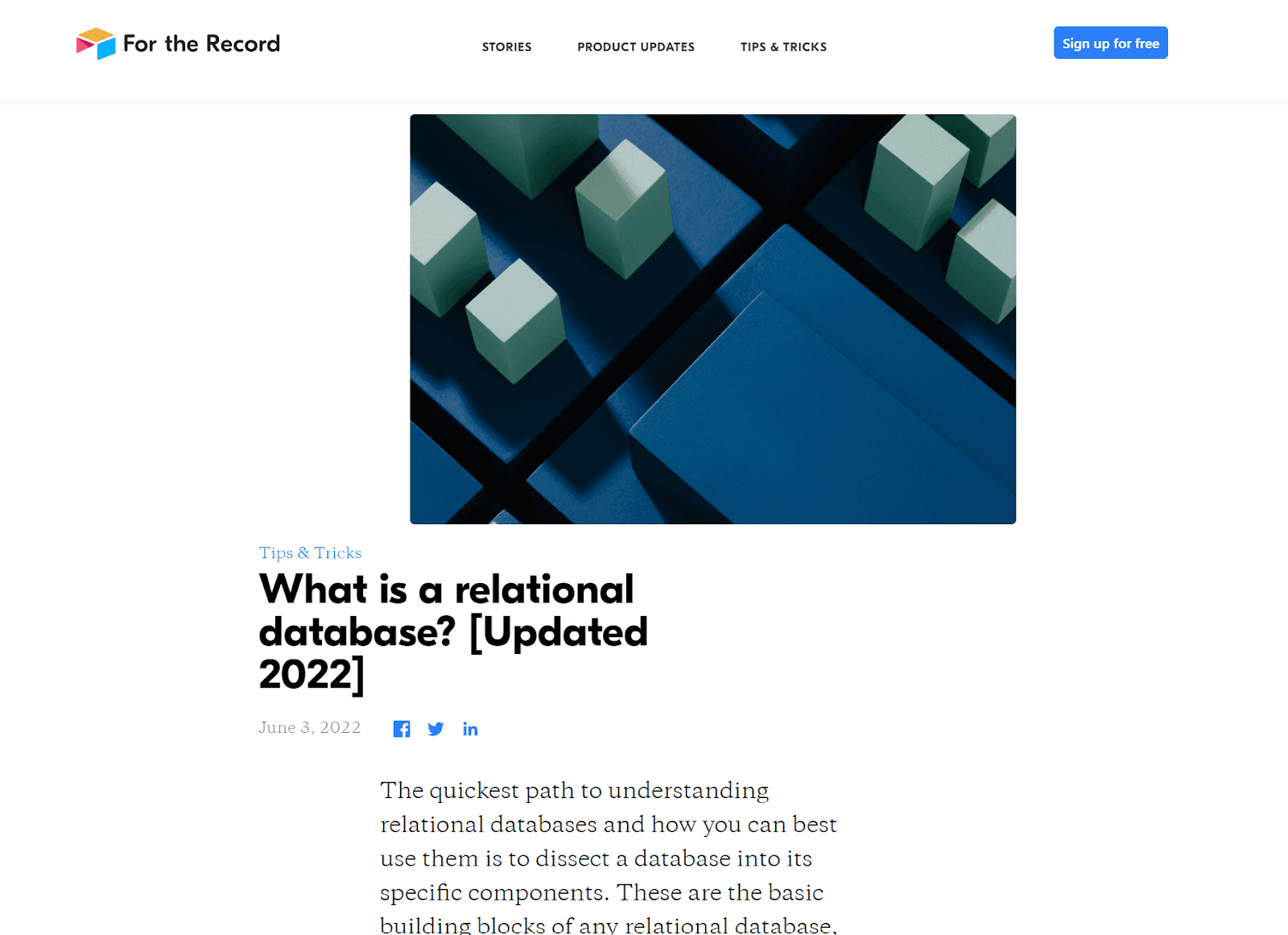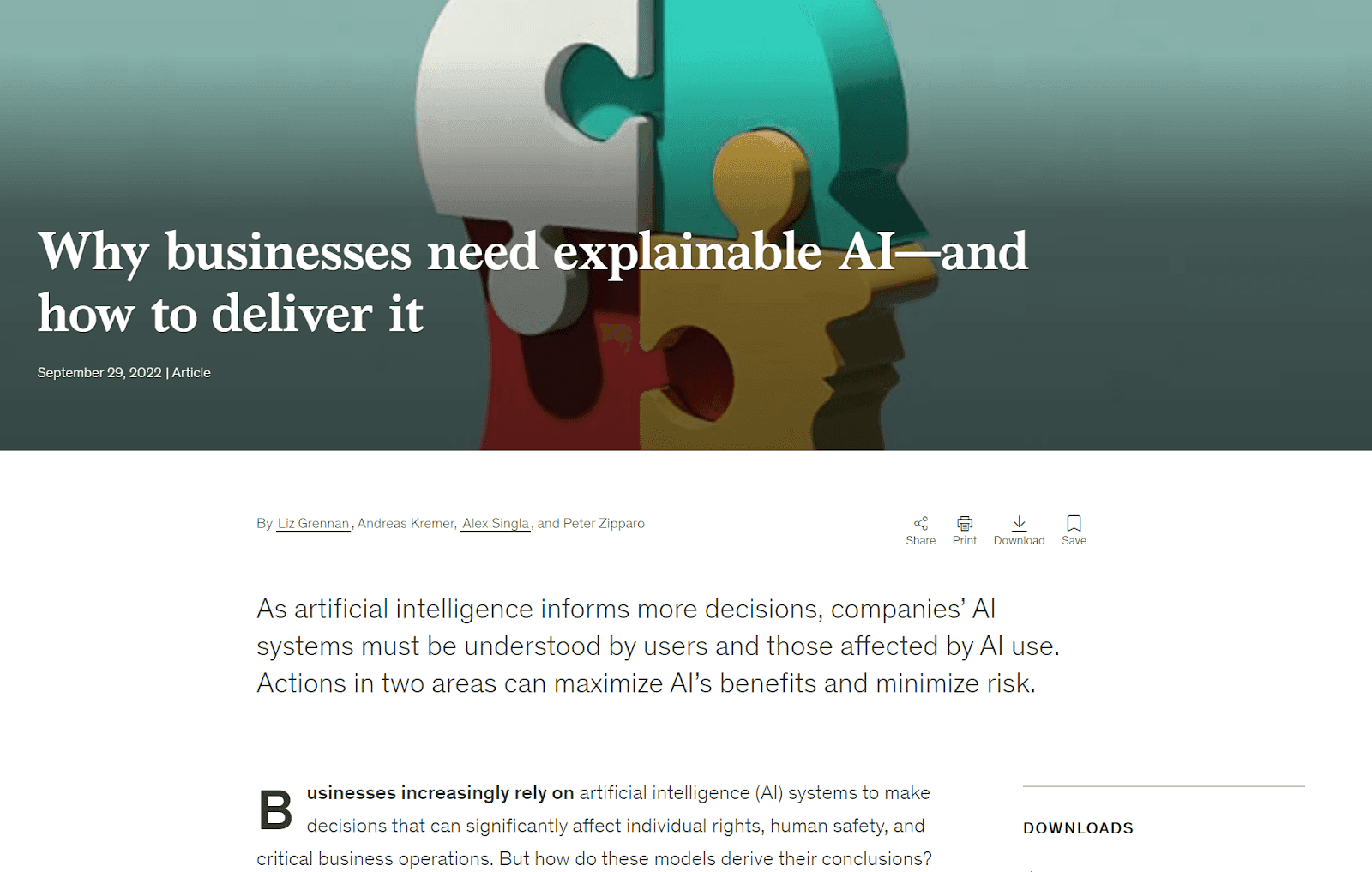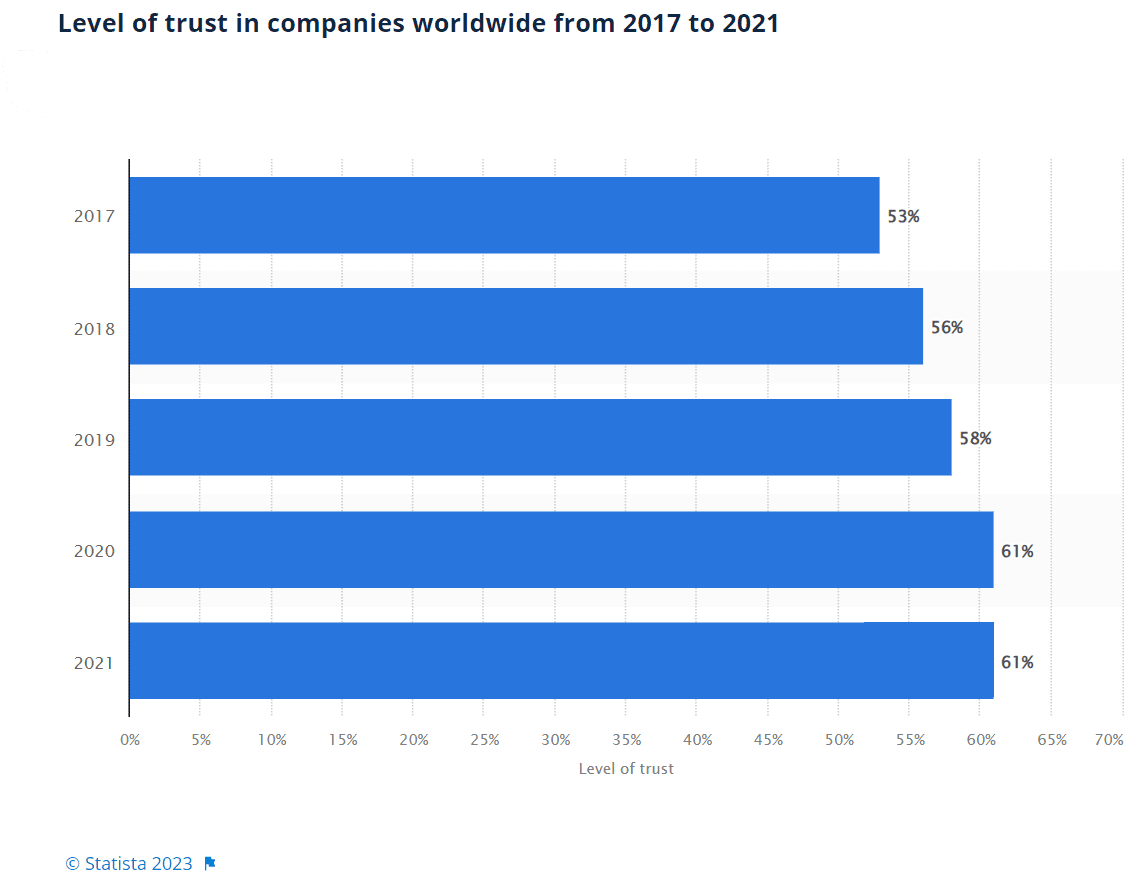Content marketing is a sub-discipline of marketing. Its goal aligns with the ultimate purpose of marketing: Content marketing generates ideal buyer awareness, interest, desire, and action in a brand and its offerings.
Consider advertising for a moment. Pretend you’re watching your favorite TV show. Five minutes into the show, there is a break for ads. These ads are not the reason you’re watching this show. Ads are intrusive pushes to make you aware of a product, service, or brand.
Unlike advertising, content marketing is often sought out. It’s not an intrusive push like advertising, but rather, a pull your target audience initiates.
The purpose of content marketing is to deliver valuable, relevant, and timely experiences that inform, inspire, educate, entertain, persuade, and/or convince ideal buyers throughout the marketing lifecycle. This benefits your business by attracting, engaging, nurturing, converting, retaining, and expanding profitable customer action. In this way, content marketing enables businesses to succeed by aligning content activity with strategic business objectives.
[table of contents]
[guide_content_upgrade_shortcode]
TV, radio, and billboards are still effective for some businesses, but they aren’t the only money-makers. According to CoSchedule’s Trend Report: Marketing Strategy, the top-performing content marketing mediums are:
- Email marketing (19% of the time)
- Social media ads (18% of the time)
- Blog posts (17% of the time)
- Organic social media posts (12% of the time)
These content marketing mediums are flexible tools, so naturally, they can help you achieve many goals.
So without further ado, here are some things you can use content marketing for:
Deliver The Right Message To The Right Person At The Right Time
If you know anything about content marketing, you know that marketers generally follow the AIDA process — they Attract an audience, Inform them about their product, build Desire, and encourage them to take Action.

As you might imagine, many, many brands use content marketing to deliver content that will make a member of their Ideal Customer Profile (ICP) take action.
Three “rights” need to be in place for this to occur:
- The marketer needs to deliver the “right” message
- The marketer needs to deliver the message to the “right” lead (if you don’t have a clear target audience in mind already, read How To Find Your Target Audience To Do Better Marketing)
- The marketer needs to deliver the message to the right lead at the “right” time
To ensure success, your content also needs to meet specific criteria. Namely, it’s:
Valuable
The marketing materials you deliver need to be high-quality, meaning they:
- Provide actionable information
- Back-up arguments with statistics, expert opinions, and insights from industry leaders
- Are easily digestible and concise
- Use visuals to enhance the impact of the materials
- Have a clear Call To Action (CTA)
- Are optimized for search engines (something you can learn more about in this article: SEO Content Strategy: How To Copy Our Recipe For Success)
Relevant
The content you provide must be relevant to your audience specifically. It must address an unmet need, provide new information, and enhance their understanding of something.
Timely
Good content marketing is delivered at just the right time. There are different “types” of content marketing for each sales funnel stage. They include:
- Top-of-the-Funnel (TOFU) content that raises awareness about a brand’s services and products
- Middle-of-the-Funnel (MOFU) content that helps leads compare your brand to other brands
- Bottom-of-the-Funnel (BOFU) content that helps leads decide if your brand is the right option for them

For example, Netflix uses ads for new TV shows and movies to get potential subscribers interested enough to visit Netflix’s website.
Then, these leads consider Netflix’s offering by reading about its features and inclusions. For example, the “only on Netflix” page shows readers a list of TV shows and movies that (as the name suggests) can only be watched on Netflix.
 Netflix also offers FAQs, a “ways to watch” page, and a shop page.
Netflix also offers FAQs, a “ways to watch” page, and a shop page.
Finally, leads view Netflix’s plan and make their purchasing decision.
Provide Value To A Defined Target Audience
“Providing value” means enhancing a lead’s current understanding of a topic by providing new insights thoughtfully.
Depending on your audience, there are many ways you can provide value. Let’s cover six of them now.
Inform
Maybe your audience doesn’t know much about a topic you are very knowledgeable about. In that case, you might seek to inform them about the topic so they can use that information to their advantage.
If you want to know what an informative piece of content marketing looks like in practice, check out this blog post on relational databases from Airtable:
 This piece covers the ABCs of relational databases, including covering key terms like “table,” “records,” “fields,” and “keys,” and the types of relationships in a relational database.
This piece covers the ABCs of relational databases, including covering key terms like “table,” “records,” “fields,” and “keys,” and the types of relationships in a relational database.
If “to inform,” is your “why,” all forms of content marketing are on the table, including:
- Podcasts
- Blog posts
- Short-form videos
- Webinars
- Thought leadership pieces
- Downloadables
- eBooks
- Templates
- Social media marketing
- Email marketing
Inspire
Content marketing doesn’t just help you market goods and services — it enables you to spread ideas and inspire people.
For example, the concept of stand-up meetings came from a Borland Software Corporation project known as “Quattro Pro for Windows.” The team responsible for the project was known for being very hard working — producing an average of 1000 lines of code each week. The practice of stand-ups then spread from there, and today, thousands and thousands of teams practice them.
Spreading an idea isn’t just a great way to improve your industry. It can also promote your products and improve your brand awareness.
If idea pitching is your why, the trusty thinkpiece is your best friend — though, you should also use podcasts, videos, and webinars to your advantage.
Educate
Today’s consumer is well-informed and well-educated, so many brands engage consumers by producing educational materials that help people learn about a brand’s niche. Like producing entertaining materials, educating people through content will help you increase brand awareness and close sales.
If this is your “why,” we recommend starting a blog, producing a knowledge base, filming video tutorials, and producing think pieces.
Entertain
Maybe closing a sale is a secondary concern for your brand, and you primarily want to amuse and entertain people.
You wouldn’t be alone in this endeavor — humorous pieces of marketing date back decades.
You might remember Wendy’s “Where’s the Beef” ad from 1984, for example, or Budweiser’s “Wassup?” ad from 1999. In more recent times, brands have published spoof ads, memes, jokes, and pranks across their content marketing channels.
You don’t have to scroll far on Netflix’s Instagram account to find a post like this, for example:

All of these pieces of media make people laugh, though they are also effective in driving profits.
Ultimately, if you want to entertain your audience, we recommend investing in short-form videos and social media.
Persuade
In the past few years, we’ve seen an increasing number of brands share their professional opinions on things.
Maybe many members of your audience hold a particular opinion, and you want to change it. Or you may want to sound the alarm about something you believe is a huge, industry-shaking issue.
In that case, you could produce content marketing materials explaining your view and persuading people to see your perspective.
Consulting company McKinsey & Company publishes a lot of think pieces. Take, for example, this blog post on the benefits of explainable AI.
This piece helps people form an opinion on explainable AI and see its business case.
Think pieces don’t need to be blog posts. You can also produce videos, webinars, and infographics.
Convince
“Persuade” and “convince” may sound similar, but there is a crucial difference between them: persuading your audience means changing their beliefs while convincing your audience means inspiring them to take action.
So, maybe your “why” is to convince your audience to try a particular feature.
In this case, you could use product-led content marketing as a tool. Product-led content marketing is the art of creating content that focuses on your product’s use cases or features. For example, Jira’s integrations are a key selling point for many customers. So, Jira has produced several how-to guides showing customers how to integrate Jira with other tools.
 Every product has certain features that make it sell. So, creating content that promotes these features will help you increase sales. (You can also increase the number of customers who use the feature.)
Every product has certain features that make it sell. So, creating content that promotes these features will help you increase sales. (You can also increase the number of customers who use the feature.)
If this is your “why,” the type of content you choose will depend on your audience and product, but we suggest trying these mediums: video marketing, how-to guides, infographics, and in-depth reviews.
Provide Value To The Business Across The Entire Customer Lifecycle
Of course, content marketing is a marketing activity, so when brands produce content, they want the content to contribute to their bottom line via the sales funnel.
Content marketing provides value across the entire customer lifecycle, including during these stages:
Attract
Lead generation is a significant challenge for many brands because they need a consistent, reliable, and high-quality source of leads. As of 2022, 61% of marketers believe lead generation is their biggest challenge.
Salespeople must continuously find new leads through their network, LinkedIn, or referrals from existing customers. Finding each lead requires a lot of effort; if they take a day off, no new leads come in.
Conversely, content marketing (in all forms) brings leads to you. So it’s more cost and time effective.
Engage
Content marketing keeps customers in your sales funnel by engaging them. It gets them curious and helps them keep digging.
For example, the movie 1917 launched this interactive website that gave viewers a “360 trench experience”.
It got people invested in the story of 1917, inspiring many of them to look into seeing the movie.
Content marketing builds trust in your brand during this stage in the customer journey.
Consumer trust is one of the most important factors that people consider when making a purchasing decision. After all, you wouldn’t buy something from a dodgy company with a website that’s from 2002, right?
Consumer trust is slowly growing, but it’s still not exceptionally high. In 2021, 61% of consumers trusted companies (an increase of 8% from 2017).
Content marketing helps companies demonstrate credibility and expertise on topics related to their niche. So, when done well, it establishes brands as trustworthy industry leaders.
Consider this: are you more likely to take Kanban productivity advice from Trello or a new Kanban board company with a blank website? Trello, right?
Nurture
Content marketing slowly nurtures your leads by teaching them about your offering and giving them the tools to evaluate it.
For example, you might produce a comparison article that compares your software to a similar software offered by a competitor. These articles help leads compare the two tools regarding price, features, integrations, APIs, customer service options, and usability. When leads read them, they think critically about which tool is right for them.
Convert
Content marketing — like all forms of marketing — pushes leads to press “purchase” and become customers. Pretty self-explanatory.
Retain
According to loyalty expert Fred Reichheld, increasing customer retention by 5% can improve profits by 25%.
Content marketing can help you make a better connection with customers and repeatedly position your goods as desirable. This connection will encourage them to stick with your brand long-term.
Expand
Finally, content marketing helps marketers to increase the average order size through cross-selling (offering products that are compatible with the product a customer is buying) and up-selling (offering a higher-end version of the product a customer is buying).
Content marketing also helps brands win new customers through referral programs.
Why Is Content Marketing Important?
Content marketing helps brands generate leads, engage them, nurture them, convert them into customers, and turn them into brand promoters. Content marketing can also help you increase brand awareness, improve your SERP performance, improve your website, and establish your brand as an industry leader.
What Does A Content Marketer Do?
Content marketers generally have the following responsibilities:
- Creating data-driven content strategies
- Creating compelling copy for websites, blog posts, social media posts, email marketing, whitepapers, eBooks, etc.
- Optimizing content for search engines
- Implementing SEO best practices (creating meta titles, meta descriptions, alt text, etc.)
- Analyzing marketing metrics and creating reports for higher-ups
- Crafting graphics that “pop”
- Managing the marketing calendar and budget




